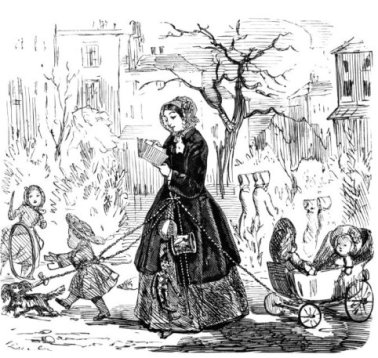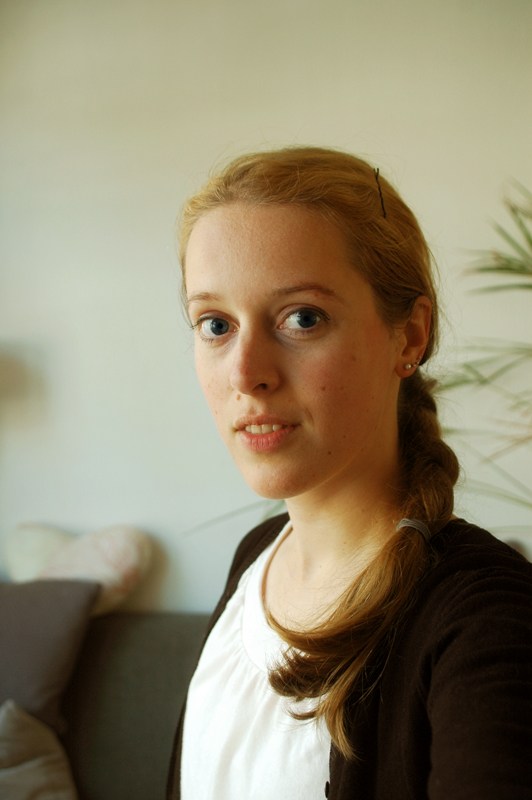Women Education in 19th century
A question of women education arose in order to a particular social status of a woman who performed only “female” functions (wife, mother, mistress), ceased to satisfy public needs. In the ancient world, maiden received home tutoring. Only girls from the upper classes deserved to study at the elementary schools which were given by institutions under the bless of Church. Humanists (Erasmus of Rotterdam, J.A.Komensky) substantiated a necessity for female enlightenment in their writings. Practical work was conducted in monasteries, where women learned good manners, graceful needlework, music, singing, poetry, and were brought up in the spirit of piety and obedience to  her husband.
her husband.
Especially successful was an activity of Ursulines (16th century) in Germany, France, the Netherlands, Italy. J.Pascal was a nun who worked at the monastery seminary of Port-Royal in the 17th century. She was an author of didactic issues upon the women’s education. M.Ward from England founded several Catholic institutions, where girls from families of English and French nobility were trained. English educators paid special attention to the role of a female education system.
In France, F.Fenelon set up a project of the upbringing and tuition of better half (“Education de filles,” 1687), which was applied at the Saint-Sire closed institute for noblewomen (based in 1686). His fundamental work became a model for alma mater in various countries. The Saint-Sire schoolhouse was set up as the first state high school for women. According to its pattern in the 17-18 centuries other educational institutions for girls from noble families were created. By 1880, three types of schools were established: primary, which was taught in one program with male (Ecoles primaries), secondary (Lycecs et colleges de jeunes filles) and teacher seminaries (Ecole normales). Women’s lyceums “colleges” gave a smaller amount of knowledge than men’s and did not give the right to enter the university. However, to enter it, womenfolk had to take the baccalaureate exam just like men. Undoubtedly, if they had the opportunity to use such website as Essayvikings.me they would pass even the most difficult exam successfully.
To put it another way, a history of women’s education begins to evolve in the 18th century in connection with a conversion of customary society into an industrial one. During the metamorphosis, just up to the 20th century, home educating stayed the dominant form of girl upbringing. There are a lot of special for schoolgirls preserved in Australia, Israel, New Zealand, Sweden, Switzerland, Muslim countries. Female tutoring in the USA became available in the 1860s, in Western Europe in the last third of the 19th century.
However, a volume of knowledge in female schools was significantly smaller than men’s. An unequal status of the womenfolk in society remained unchanged. It is hard to get a vocational tutoring. Because of this, the woman-worker was doomed to unskilled work in a limited range of professions. One of the acutest problems related to women’s right to work, in European countries, discrimination against them in the field of enlightening experience stayed.
In the middle of the , many countries embraced the women’s movement for equality and a right to free education.
In the second quarter of the 19th century, demands of feminists’ movements in different countries began to take a form of public companies and shares. Initially, an issue of female access to higher education (in Asia, Latin America and the Middle East, there were few literate ladies, the issue of women’s schooling was raised by men) was the first in Europe and the USA.
According to women’s rights history, Louise Otto-Peters is one of the founders of “General German Women’s Union” (1847). In her speeches, her supporters demanded female political freedoms, the right to education and work, economic independence, the right to vote. Louise Otto Peters obtained permission to attend incomplete women’s schools with subsequent education in private schools and family-type boarding houses. In 1850, Sunday schools were opened in Hamburg.
Thus, in 1857, women were allowed to attend lectures at the University of St. Petersburg, and in 1895-1896 at the universities of Goetting and Berlin as volunteers. Then another ban for the presence of womanhood in higher education (especially medical and legal) followed. A reaction to the ban of authorities was a creation of private women’s groups.
In Germany, with an assistance of the women’s suffrage “Reform” in 1889, women’s gymnasiums and universities were opened.
By the 80-90’s of 19th century the following system of women’s education has developed in Germany: primary school, joint (city schools for girls aged 6 to 15 years) and secondary schools (“high school for women”) from privileged classes, which nevertheless did not give the right to get the higher education.
The greatest women’s educational institutions were opened in 1867 Victoria Lyceum in Berlin and private higher women’s courses in several cities. Along with the state schools, private and boarding schools for the daughters of the big bourgeois and officials stayed. In England, women’s education in the 19th century was in the hands of the clergy and subordinate organizations of a charitable type. In the early 19th century the public schools for girls from privileged families are being created.
Under the law of 1870 on the introduction of compulsory education for people of both sexes, the joint tutoring was provided. England was the first in the development of secondary female schooling in Europe at the end of the 19th century. Although, like in other European countries, it was available mainly to representatives of privileged classes.
—–
This guest post was written by Nicole Lewis!
 Hi! My name is Geerte, I'm a researcher of Nineteenth century history from the Netherlands. This blog is where I write about my favourite subject. Feel free to browse around!
Hi! My name is Geerte, I'm a researcher of Nineteenth century history from the Netherlands. This blog is where I write about my favourite subject. Feel free to browse around!
It would be interesting to examine the American experience in the 19th century.
[…] Image References:Japan Curiousity, retrieved February 02, 2019, fromhttps://www.jcuri.com/archives/11204Smithsonian.com, retrieved February 02, 2019, from https://www.smithsonianmag.com/science-nature/galileo-reconsidered-7931973/WordPress, retrieved February 02, 2019, fromhttps://19thct.com/2017/09/25/guest-post-womens-education-in-19th-century/ […]